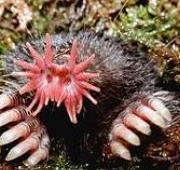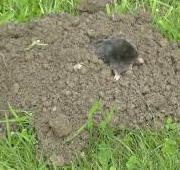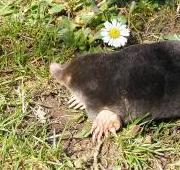 Moles are a small mammals that are most well known for living in tunnels underground. Moles are commonly found in Europe, Asia, South Africa and North America although there are oddly no moles inhabiting Ireland.
Moles are a small mammals that are most well known for living in tunnels underground. Moles are commonly found in Europe, Asia, South Africa and North America although there are oddly no moles inhabiting Ireland. Moles have long, curved claws which the moles use to burrow underground. Moles can quickly create long tunnels under the surface of the earth and the tunnel entrances can easily be identified by the mounds of earth that appear (normally all over your garden lawn)! These mounds of soil are commonly known as mole hills.
Moles have long, curved claws which the moles use to burrow underground. Moles can quickly create long tunnels under the surface of the earth and the tunnel entrances can easily be identified by the mounds of earth that appear (normally all over your garden lawn)! These mounds of soil are commonly known as mole hills.


Moles are omnivores that primarily feed and hunt earthworms. The saliva in the mouth of the mole contains a toxin that can paralyze small animals such as earthworms meaning that the mole is able to eat its catch successfully but the mole is also able to store food to eat later. Moles are known to construct special underground larders in which the mole can store its food. Some of the larger species of mole have also been known to eat small mice. The mole does this by catching the mouse at the entrance to its burrow.
The eyes and ears of the mole are very small and usually covered in fur. The small eyes of the mole are thought to have become like this due to the mole not using its eyes and through natural selection. The most powerful sense of smell a mole has is its sense of smell, and some species of mole (such as the star-nosed mole) are able to detect, catch and eat their prey in less than a second!
Moles breed in early spring with the female moles gestation period lasting about a month. The female mole then gives birth to between 2 and 6 mole babies. The baby moles are usually completely independent within a month after birth. The average lifespan of a mole is about 4 years but some species of mole have been known to live until they are 6 or 7 years old.
Due to their small size, moles are preyed about by mammals, birds and reptiles when the moles are above ground. When moles are in their burrows they are relatively safe from harm, with most moles being killed whilst in their burrows from gardeners and their spades.

